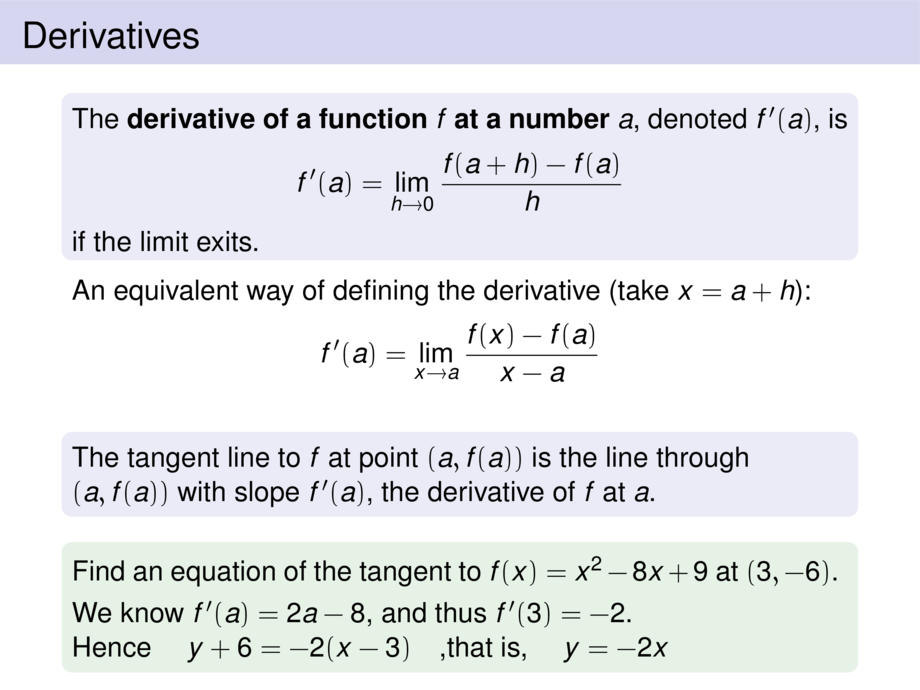



































































































53/74
\begin{frame}
\frametitle{Derivatives}
\begin{block}{}
The \emph{derivative of a function $f$ at a number $a$}, denoted $f'(a)$, is
\begin{talign}
f'(a) = \lim_{h\to 0} \frac{f(a+h) - f(a)}{h}
\end{talign}
if the limit exits.
\end{block}
\pause
An equivalent way of defining the derivative (take $x = a+h$):
\begin{talign}
f'(a) = \lim_{x\to a} \frac{f(x) - f(a)}{x - a}
\end{talign}\vspace{-1ex}
\pause\medskip
\begin{block}{}
The tangent line to $f$ at point $(a,f(a))$ is the line through
$(a,f(a))$ with slope $f'(a)$, the derivative of $f$ at $a$.
\end{block}
\pause
\begin{exampleblock}{}
Find an equation of the tangent to $f(x) = x^2 - 8x + 9$ at $(3,-6)$.
\pause\smallskip
We know $f'(a) = 2a-8$\pause, and thus $f'(3) = -2$.\\\pause
Hence \quad$y+6 = -2(x-3)$\quad\pause,that is, \quad$y = -2x$
\end{exampleblock}
\end{frame}

